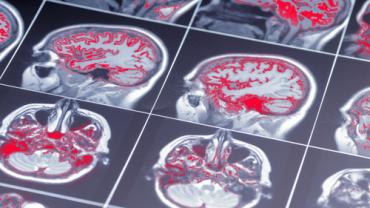
Traumatic brain injuries are frightening on multiple levels. First, since they often occur via accidents, there’s no way to completely prevent them. Wearing protective gear while playing sports, and buckling up when riding in a car may help mitigate some of the potential danger, but it isn’t possible to eliminate the danger altogether. Second, there aren’t many effective treatments available. Depending on the precise nature of the injury, physical and occupational therapy may help improve an afflicted individual’s mobility and quality of life, and select pharmaceutical agents can help with pain and related symptoms, but these do little to correct the underlying problems caused by a physical trauma to the head. And third, owing to the nature of brain trauma, the physical symptoms are only one aspect; often, cognitive function—including memory, attention and focus, moods, and behavior—is affected as well. For these reasons, anything that might help afflicted individuals would be most welcome.
Some of the pathological changes that result from traumatic brain injury (TBI) resemble those seen in Alzheimer’s disease (AD). For example, an accumulation of beta-amyloid proteins is observed in both conditions, likely because, despite their bad reputation, these proteins are secreted in response to neuronal injury and are increasingly believed to be neuroprotective. TBI is also similar to AD in that cerebral energy metabolism is altered: in the acute phase, immediately after injury, brain glucose metabolism is increased, but over time, it is decreased, mirroring the reduced cerebral glucose usage seen in AD. In Alzheimer’s, reduced cerebral energy metabolism has been shown to be specific to glucose. For this reason, exogenous ketones and/or a ketogenic diet may be a helpful adjunct to conventional therapies, and this may be true in TBI as well.
Beyond ketones, another compound that may be beneficial for those living with TBI is glycerophosphocholine (GPC), sometimes referred to as choline alphoscerate (alpha-glyceryl-phosphoryl-choline, or A-GPC). Interventions aimed at the cognitive impairments associated with AD and TBI include acetylcholinesterase inhibitors, under the premise that inhibiting degradation of acetylcholine (ACh) could potentially boost the memory-enhancing and other cognitive activities of this neurotransmitter. Striking from the other side, GPC serves as a source of choline and thus, a potential precursor to ACh, so rather than “plugging the drain,” as an ACh inhibitor would do, GPC turns the faucet on higher—theoretically, it may increase synthesis of ACh, rather than decrease the degradation of that which has already been produced.
Increasing ACh synthesis is only one aspect of GPC’s potential in the TBI patient population. Let’s not forget that TBI involves structural damage to the brain, and brain phospholipids—such as phosphatidylcholine and sphingomyelin—require choline. The authors of a paper exploring choline-containing phospholipids noted that GPC could “protect cell membranes and could be helpful in the sequelae of cerebrovascular accident treatment.”
Owing to the reduced cerebral blood flow in some patients due to the physical trauma of TBI, it’s possible that interventions shown to be helpful for vascular dementias may be beneficial for those with TBI. A-GPC is typically well-tolerated and has been shown to improve cognitive function in vascular dementia patients. A-GPC has been shown to have “therapeutic usefulness […] in relieving cognitive symptoms of chronic cerebral deterioration” in subjects with various forms of vascular, degenerative, or combined dementias, and in acute cerebrovascular diseases, such as stroke and transitory ischemic attack (TIA).
Animal studies have confirmed that A-GPC increases the release of acetylcholine in the hippocampus, facilitates learning and memory, decreases age-dependent structural changes in brain regions involved in learning and memory, and it exerts neuroprotective effects in models of altered cholinergic neurotransmission and of brain vascular injury. In Alzheimer’s patients with concomitant ischemic cerebrovascular injury, A-GPC in combination with the cholinesterase inhibitor donepezil significantly slowed cognitive deterioration compared to donepezil + placebo. Although these were not TBI patients, the similarities in brain structural and functional pathologies between AD and TBI suggest that A-GPC might be beneficial in TBI patients. Additionally, it’s not uncommon for TBI patients to experience seizures. A rat study showed A-GPC injection to improve cognitive function by way of reduced neuronal death, increased neurogenesis, and reduced disruption of the blood-brain barrier when administered three weeks after induced seizures and given for three weeks.
Beyond potential applications for GPC in addressing the cognitive aspects of TBI, this compound may also be beneficial for the motor impairments some individuals experience. Research needs to be done in those living with TBI, but evidence is emerging that A-GPC may be an ergogenic aid with regard to isometric muscular strength and force production. Studies have been conducted in healthy college-aged males, who, admittedly, may not be representative of the TBI population as a whole, but research has to start somewhere. So far, things look promising for GPC. In these subjects, six days of A-GPC supplementation (600 mg/day) resulted in greater than a 3% increase in lower body isometric strength. Three percent might not sound like much, but these were healthy young men. It’s possible the effects would be greater in someone with an injury that may be affecting motor performance. Certainly more research is needed in this area, but encouraging signs are appearing.